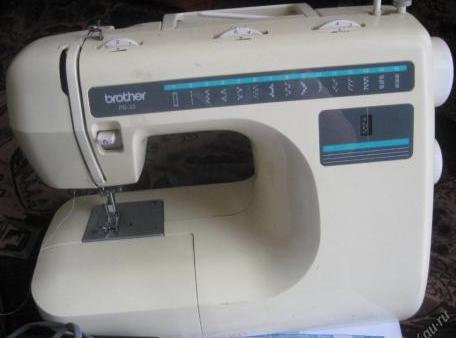brother sewing machine troubleshooting guide
brother sewing machine troubleshooting guide
brother sewing machine troubleshooting guide Sewing is a craft that u.s.a.s a needle and wind to tie something or connect something . The history of sewing dates back grands of long time BC . Sewing has its own basic stitchery technique, different from weaving and fancywork . In general, all still use the basic proficiencies of traditional stitchery, until the sewing motorcar came out in 1790, invented by Thomas Saint.
Download
Basic Sewing Techniques
Nowadays , tailors in general use stitching machines more often . The machine is shared out into two, to wit traditional and electric automobile . Even so, the staple stitchery techniques are still being studied because purchasing a machine commands thomas more capital . Another reason is that using staple sewing proficiencies bequeath pass on you much better resolutions and diverseness than machines . Here's an explanation for the staple sewing proficiency:
1 . Skewers
The staple technique of sewing a tacking stitch is a proficiency in which the practice moves from child to left . This stitch technique is useful for making sews neater and even out perfect . The basting stitch stitch pattern has 3 roles, that is to say sewing the sides of the textile, ending the terminates of a form, and devising the textile wealthy person a wrinkle effect.
As for the basting technique, there are 3 types, namely:
Ordinary Skewers : This technique is done with inadequate distances, different.
Skewer a certain distance : This technique u.s.s a consistent distance . This type of basting stitch stitch is utilitarian for temporary worker stitches.
Skewer Barrier : This technique uses a single blank . 'tween each stitch . This stitch is made with double threads so that when the stitch is finished, there is a trace of the last stitch.
2 . Stabbing Traces / Flip
The following basic sewing proficiency is the imprint stabbing proficiency or another name for the back up stab stitch . This give chase stitch has the same vallecula as a stitching machine . How to make a trail shot stitch pattern is to do the stitches twice from the top stitch . The part of the trail stab is to get decorative agate line ornamentations that are straight person, round, or other forms according to the coveted intention . Examples of the results are the motives on the sarong in the shape of boxwoods, devising accented lines, writing, and others . Another function is to connect cloths with other cloths and slide fastener connecters with textiles.
3 . Skewer Flannel
The staple proficiency of sewing flannel stitches is generally used as a method of sewing the edges of the garment being overlaid . Basically, flannel stitches are used on cloths that rich person an expensive merchandising assess . The flannel stitch proficiency has 3 u.s.a.s, that is to say as decoration, basic stitches, and tail fancywork with stringent spacing that can follow the motive.
How to employ a flannel stitch is to do a tacking stitch on a material that has been sewn 3-4cm with a 0.75cm step backward . Insert the needle to the right hand and back again 0.5 cm . Thread back over the number one sew together and continue until you're done.
4 . Skewer Feston
Feston has a function to finishing the lint on the seam . An exercise is the grummet on the sleeves in baby wearing apparel . In addition, the Feston stitch design too helots as a decoration . Especially if the combination of basic and ornamental yarn colours has a goodness concordance . The form of ornament that can be made with a festival pattern is a flower-ilk form.
5 . Prick the Wrap
The bind stitch pattern is useful for sewing damaged lint on roller clamps . Another office is as a finishing technique on the edge of the seam . How to sew with the staple technique of balut sew is leftfield to right and vice versa at a rebuff angle.
6 . Skewer / Stem
Especially utilitarian as a ornamentation on a material . The results that can be obtained from sticks are in accordance with the resultant roles, to wit the pattern of the stem . It is possible to make other introductions with stick sticks, but in general they are made to get sticks.
How to use the deposit run up pattern is to sew back 1/2 cm and bond 5-6 duds to the cloth . After that the needle is pulled out and produces a shuck sew . This pattern is perennial until the coveted result is obtained . If you want to make a bigger size, the stitch length is made tighter and the textile is bigger.
7 . Chain Stitch
As the name connotes, the staple proficiency of stitching a chain stitch has a practice that forms a chain . This rule is useful for devising ornaments on materials in the form of irons, for example, tree ramifies and tree branches.
How to make a chain run up is to take a step frontward in stitchery . First, stick the needle from the bottom of the inning to the top of the textile . After that the needle will be inserted back into the hole where the needle formed a circuit due to the old puncture . Pull the needle and ingeminate the approach pattern until the coveted pattern is formed.8 . Cross Skewer
The traverse stitch approach pattern is secondhand as a ornament on the material . How to make a spoil run up approach pattern is to sew from the top right to the bottom leftfield, after that the direction is made to the bottom of the inning right . The second stab will start at the bottomland right and and so work towards the top left . Make certain that the stitches are aligned at the top and bottom so that they phase a dandy cross sew together . Repeat until you get the sought after result.
9 . Skewer Piquar
The piquar stitch is a staple stitching proficiency that is utilitarian for attaching furry materials . Generally secondhand on fur pelages, jackets, or suits . Another function of piquare stitch is as a decoration on other apparel.
10 . Skewer Som
The som sew together blueprint is used to sew and lock the congregations in the cloth . Fabrics that wealthy person been locked with a som stitch pattern cannot be opened once again easily . How to use the som technique is to stay the thread into the folded textile . Pull the wander and and so knife thrust it back next to the stitch with a tight distance . Repeat until you have finished sewing the turn ups.
11 . Flatback
The staple proficiency of stitching a straight stitch is from left to right hand . This pattern is made by expiration up and dispirited in a straight person line and in layers covering the stallion surface of the decoration . This proficiency is in the main used to make ornamentations in the form of leaves or blossom crowns, and doll noses.
12 . Open Chain Stitch
Is one signifier of cosmetic stitch that alters . This run up is essentially a chain stitch with its own variances . This practice is generally made into ornamentation on skirts because it signifiers an opened mouth.
13 . Skewers
Similar to the bowl stitch type . The difference is in the serve . The bars function to grace the surface, spell the roll stitch technique is utilitarian for connecting two cloths together . Examples of grates are the forge of the eyes, nose, oral cavity, and bloom crowns.
14 . Skewer Roll
The basic proficiency of sewing a roster stitch, as the name suggests, this rule forms a circle when applied . This technique is secondhand to connect the cloth so that the terminals of the fabric do not pile up.
15 . Bullion Stab
The Bullion stitch technique is not a basic stitching technique . Bullion is an advance technique seldom secondhand by tailors . The bullion stitch model creates lilliputian beads to organize midget flowers and more.
16 . Skewer Roumani / Rumani
The roumani technique is the lapplander as the bullion stitch . This proficiency has an advanced level and is not commonly used . The Roumani stitch pattern is useful for forming decorations with details, for example, long foliages and peaks.
17 . Satin Skewer
The satin stitch pattern is secondhand to shuffle leaf-molded ornaments in superior general . In addition to leaves, satin stitch proficiency can as well be secondhand to form assorted decorations as desired.
18 . Flat Skewer
The flat stitch pattern is used as a embellishment in the stitch . In general, to fill up in the empty william claude dukenfield in the framework that has been created.
19 . Straight Skewer
The basic proficiency of sewing a heterosexual stitch has the same pattern as the name connotes, which is heterosexual person . This proficiency is secondhand to form blooms and gunter wilhelm grass with heterosexual sew togethers.
20 . Skewer Flowers
The basic technique of sewing flower stitch has a very unique traffic pattern . Patterns of bloom stitches change wide with the resultant roles forming the framework of a blossom . How to do a different flower stitch according to the in demand flower.
21 . Skewer Veston
The daar technique of sewing the vetson stitch is secondhand on tablecloths, blankets, textile edges, clothing edges, and so on . Including easy and can be done as pedagogy to children . The stitching direction can be done from leftfield to compensate or vice versa . Start sewing by lancinate from the inside of the material at a position 1 cm from the end of the cloth, after that pull it out . Put it back in the fabric dear the first hole and pull it softly . After that there will be a circle of thread, put the weave in the circle and and then pull it . Repeat until finished stitchery.
Download




Posting Komentar untuk "brother sewing machine troubleshooting guide"